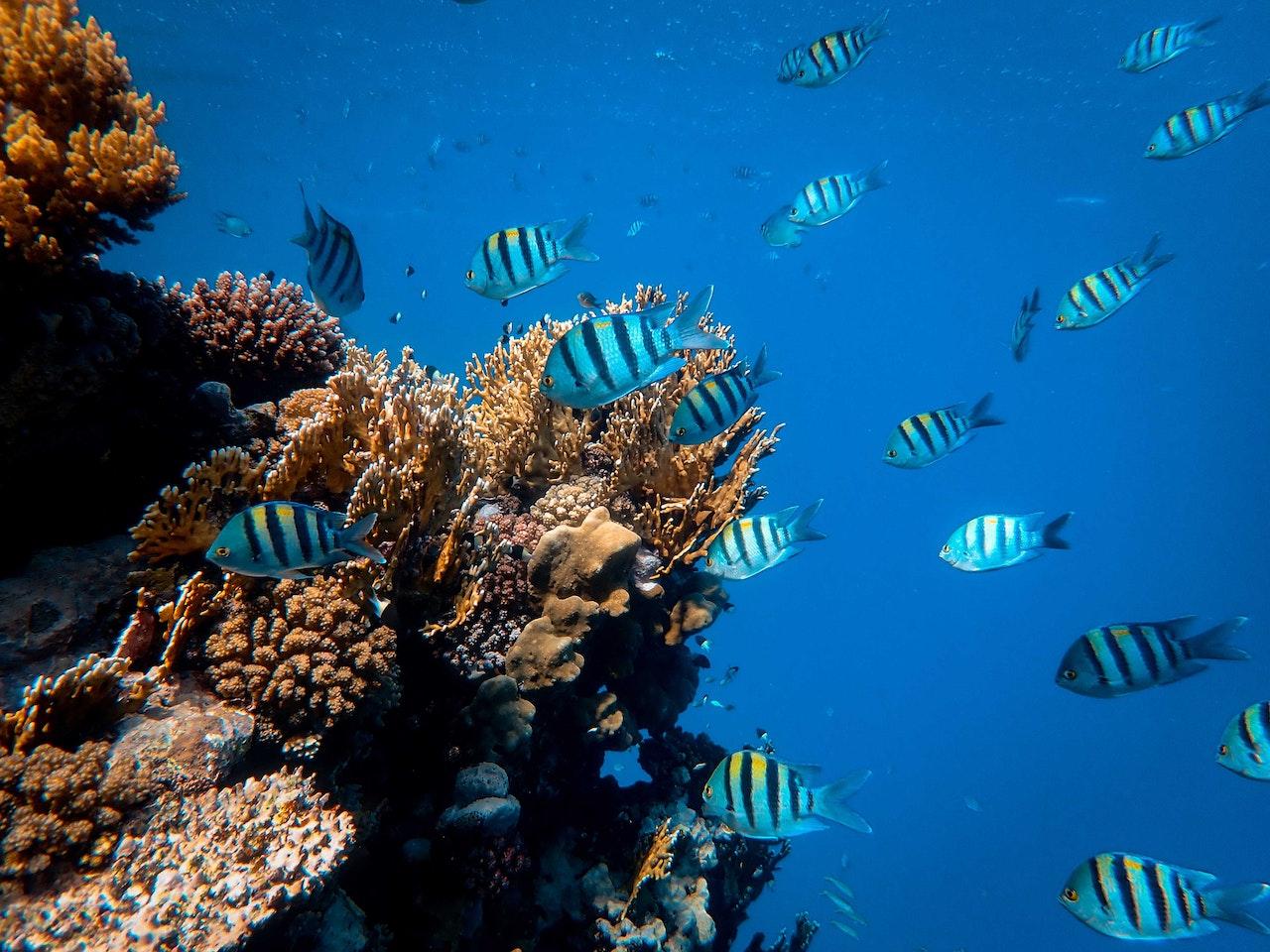FSB, Street No. 22, Punjab, Pakistan
Of course, if you’ve ever caught one, you’ve removed a fish from the water. Most anglers have probably asked themselves, “how long can this fish safely stay out of the water?” when struggling with a tenacious hook or waiting for the perfect photo op with a trophy catch.
Now we’re talking! I’ve done extensive research in the field of “fish out of water.” A few fish can stay alive for a few minutes, others for a few hours, and still others for a few months! Which fish you catch, where you catch them, and how long you battle them all play significant roles.
A large variety of fish around the world may either directly breathe air through their skin or have air-breathing organs. Fishes like the tarpon, arapaima, walking catfish, snakehead, eel, bowfin, lungfish, gar and many others fall into this category.
How Long Can a Fish Live Out of Water?
Some of these fish have trouble inhaling air and gulp air from the surface during extended confrontations, like the tarpon. Snakeheads and walking catfish can breathe air for several hours without water.
Killifish do well in bait buckets because they can breathe through their skin and tolerate low oxygen (hypoxia). Moreover, the mangrove rivulus, an extreme killifish, can remain dry for nearly a month.
It’s not always instantaneous death for a fish that can’t breathe air. Catfish (channel, blue, etc.) can survive several hours without oxygen. Some species of fish, though, can’t handle being out of the water quite as well as others. Trout, in particular, don’t do well when removed from the water for any length of time.
Much cold-water fish, especially those used to living in such temperatures, can persist for lengthy periods of time without oxygen because their metabolic rates and oxygen demands are lower in cold water. For instance, while ice fishing, I caught some pike, which I promptly stored in the freezer. A few hours later, when I opened my cooler, there was still film inside. On the flip side, many fish captured in very warm water need a lot more oxygen and probably won’t survive as long out of the water.
How Long Can a Fish Live Out of Water?
Most crucial, a fish needs to be returned to the water as soon as possible after being caught since the longer you fight it, the more oxygen it will require to recuperate. It’s like attempting to hold your breath underwater after running a marathon; you wouldn’t last very long at either. After beating a fish, it must be submerged to recuperate strength. Unless the fish is exhausted, you may need to administer fish CPR by pouring water over its gills or moving it so it can acquire oxygen.
What about the common non-avian fish that doesn’t spend much time battling on a mild day and doesn’t need oxygen? Bass, perch, and drum, which lack air-breathing adaptations, can survive being out of the water for a few minutes. However, it is advisable to return fish to the water as quickly as possible to lessen their stress. Even if you have to work at it for a while to get the hook out, the fish should be fine if you release them back into the wild, but you should keep an eye on them once you do so. Prepare CPR for several fish until they can swim away.
How Long Does a Fish Need Food and Water to Survive?
Do you plan on going out and buying your very first school of fish pets? Is keeping fish a hobby you’re thinking about taking up? Individuals may be wondering how long fish can be kept out of the water after buying them or catching them yourself.
Once you’ve got your fish home in the aquarium, there are a few other considerations you should give some thought to, depending on the species you’ve chosen to keep or intend to acquire.
- What kind of water does these fish prefer, salt or fresh?
- Find out how big an aquarium you need for a specific fish species.
- Is it going to get along with the other fish in your aquarium?
The answers to these questions are just the beginning of what you’ll need to know to properly care for your fish.
When someone feels out of place, they are like a “fish out of water.” A fish out of its element would flutter its fins and try to swim back to its natural environment, which is water. Fish, though, can actually make it without water, right?
Some fish, like the West African lungfish, can live without water for YEARS if necessary.
A common rookie mistake when cleaning a fish tank is to completely dump the water out. Doing so would be disastrous, as you would be putting your fish at greater risk by “over cleaning” the tank and disrupting the delicate biological balance that your fish have worked so hard to establish.
How Long Can a Fish Live Out of Water?
Sometimes fish owners purposefully deplete the water from the tank, assuming the fish can survive for a short period without water. This is harsh and will stress out your fish.
Fish, like all other species, need oxygen to survive. Most fish use a breathing apparatus called gills to take in oxygen from the water they swim in, but other species are able to do so by other means, such as their skin. Most fish lack the innate ability or, more importantly, the developed lungs necessary to live on land. However, even robust pet fishes can only survive out of water for up to 10 minutes before they begin to dry out, suffocate, and die. A fish’s capacity to survive without water depends on its species, size, where it was captured, and how long you’ve been attempting to catch it.
Amphibious creatures are typically fishes that have adapted to land life by creating a system to collect oxygen via their skin. In addition, larger animals can store air for use while underwater. Fish kept as pets in aquariums don’t develop these characteristics. The amount of time that some fish can remain alive when removed from water depends on a number of circumstances.
Variables That Determine How Long a Fish Can Stay Alive On Land
Species
Different species of amphibious fish have different body mechanisms that allow them to survive for hours, days, or even years away from water in the wild. When it comes to survival, it’s critical that aquarium fish get back under the water as quickly as possible because they can only stay above water for a couple of seconds or minutes at a time.
Metabolic Rates
The oxygen intake of fish is a measure of how much food and water a fish needs in order to survive. The metabolic rates of fish are sensitive to factors such as temperature, which in turn influences their internal temperatures. Fish that do well in cooler temperatures have slower metabolic rates and can stay alive on land for far longer than warmer-water fish.
Oxygen Demand
Fishes adapted to colder temperatures are more robust while they are adrift because they have a lower metabolic rate and oxygen consumption.
Why Do Fish Swim Toward Land?
The following are some of the reasons why rare fish species may need to avoid water to ensure their survival:
- To keep from becoming dinner”
- to escape dirty water or a low-oxygen environment;
- as a means of evading water that is gradually becoming too warm to swim in;
- the existing biome is shifting or drying out, and/or they need to find a mate or food.
Fishes Capable of Air-Supportive Breathing
These extraordinary fishes are superior to all others in that they can live successfully on land for much longer than any other fish. They might not be cute enough to keep as aquarium pets, but they are intriguing nonetheless.
Mangrove Killifish
Mangrove rivulus, also called mangrove eelgrass, is primarily found in saltwater and brackish (estuarine) environments. These Fish are where they thrive, although they’re also in the Caribbean and Atlantic. This amphibious fish can live on land for two months by breathing through its skin and reproducing asexually.
Mudskippers
They are amphibious, so they may spend most of their lives on land despite their peculiar appearance and size. These may attain a length of twelve inches. Pectoral fins are positioned forward on body-like legs, allowing these animals to move, skip, and climb trees and low branches. They have the ability to leap more than two feet with the help of their fins.
Because of their thickly venous skin, they can readily navigate muck and swamp. By breathing via their skin, they can deliver oxygen directly to their bloodstream.
Walking Catfish
The 20-inch walking catfish is a widespread freshwater fish in Southeast Asia. It’s a catfish, named for its whisker-like barbels. They can ‘walk’ on land using only their pectoral fins. Due to strong tides or severe rains, it frequently ends up on the shore.
Catfishes, as a group, come from a diverse lineage and may thrive in a wide range of environments. Catfish for sale in markets are kept in a huge bowl or tank with little water for 15-18 hours.
Rockskipper Fish
These freshwater fishes, which are also known as coral blenny, are noted for their penchant for jumping or skipping from one rock pool to another in quest of mates and new homes. These can be spotted in shallow pools, either lurking behind rocks or gliding effortlessly over the beach and debris.
Snakehead Fish
Some portions of Africa and Asia are rich in this fish’s natural habitat. They’re amphibious and have an extended body; they’re predators; they devour plankton, tiny fish, frogs, and even rats.
Some snakehead species may live on land for six days, while others for months.
Keepers of this species should use extreme caution before transporting or releasing their fish, as the fish can quickly escape and ambush an unsuspecting victim.
Lungfish
Rare and one-of-a-kind species, with only six surviving forms. Species like this are restricted to just three continents: Australia, Africa, and South America. Lungfishes have their ancestor’s lungs, lobbed fins, and internal skeleton to breathe air on land. Lungfishes are found in freshwaters such as lakes and rivers. Due to environmental dryness, lungfishes use both lungs and gills to breathe; they can be inactive for four years.
Eels
Crawling around sandy or rocky bottoms are long fishes with rayed fins and eels. Eels can breathe through their skin and swim upstream to bypass impediments like dams. Insects prefer to live near the water and can be discovered in the sand, dirt, and even beneath rocks.
Climbing Perch
Typical of the waters of Asia, particularly China and India, but found across the region. Like the lungfish, this fish has both gills and lungs, making it adaptable to harsh environments. Since they are an invasive species, they can easily spread to other areas by hitchhiking on fishing vessels.
Reportedly, they have started thriving in places other than their native Papua New Guinea and Australia. Between six and ten hours, they may survive on land. It travels by wiggling its body forward from one location to another.
Large Ocean Fish
Marine mammals that can live underwater by storing air and oxygen in their lungs and airbags include the short-beaked dolphin, beluga, blue whale, sperm whale, and porpoise, among others.
Short-beaked dolphins, belugas, blue whales, sperm whales, and porpoises can breathe underwater. Dolphin, beluga, blue whale, sperm whale, porpoise.
Marine mammals, like humans, need to come up to the surface to breathe.
Dolphins leap into the air to inhale oxygen through their blowholes and store it in their airbags when submerged. It’s the same routine every time they have to go get some air.
Each species of marine animal has a unique capacity for air retention. Some can breathe the air at the surface continuously for months, while others can only do so for hours. If they don’t make it to the surface, their organs will crush their body.
Conclusion
There’s a wide range of fish species. Animals that live in the ocean can surface for air and food at other times. To deal with challenges unique to life in the wild, such as locating suitable breeding and feeding grounds, each species employs its own set of specialized survival strategies. It is extremely important for us fishkeepers to not put our fish companions through any kind of stress by doing things beyond their capacities, as most of what we know about fish breathing is based on observations made in water. Even though some fish are amphibious and others can only breathe air, the oxygen present in the air is essential to the health of all fish.




